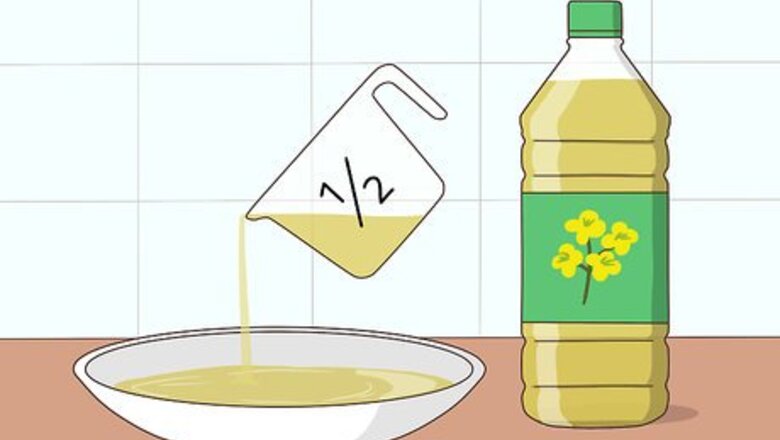
views
Using a Salt and Oil Scrub

Carefully pour ⁄2 cup (120 mL) of oil into a shallow bowl. To remove wood stain from your hands (or any other greasy or sticky substances), use either canola oil, vegetable oil, olive oil, avocado oil, or coconut oil. Pour the oil into a small bowl, or have someone else do it for you if your hands are too messy. You could also pour the oil directly onto your hands if you prefer.
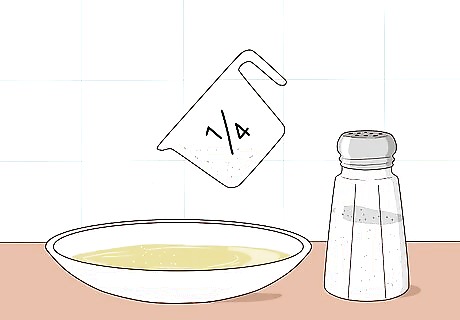
Add 1/4 cup (75 grams) of table salt to the oil. The salt will act as a kind of scrub to work the oil into your hands better than if you were to just use oil. The measurement doesn’t have to be exact—you just want enough in there so that the salt will work as an abrasive against the stain. If the staining isn’t too bad, you may not need to use salt at all. Or if you have sensitive skin, try just soaking your hands in oil for a few minutes and then washing them with warm water and dish soap. If you don’t have table salt, you could use sea salt, though that may be a bit more abrasive on your hands. If you’re opting to just pour right onto your hands, simply add a big spoonful of salt to your hand along with the oil you poured on.
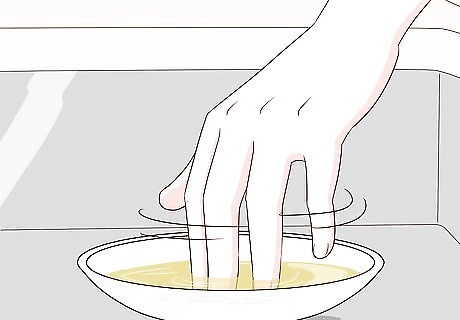
Mix the oil and salt with your fingers. This will give your fingers a little extra time in the oil, which is really helpful if you've gotten stain around or under your fingernails. It’s best to do this near or in a sink so you don’t accidentally spill oil anywhere. If the stain is really set in, you could even soak your hands in the oil and salt for 5-10 minutes before moving on to the next step.
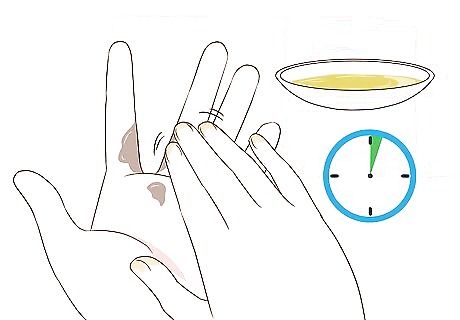
Scrub the oil and salt into your hands for 2-3 minutes. Simply scoop up some of the mix and start gently rubbing it into your skin. Make sure to get the backs of your hands and between your fingers, too. While you want to be consistent, avoid rubbing the salt in too aggressively so that you don’t irritate your skin. As you work the mix into your hands, you should notice the stain getting lighter and lighter. Martha Stewart Martha Stewart, Homekeeping Expert When removing stubborn wood stain from hands, it is important to act quickly and use the proper technique. A mixture of oil — such as olive or vegetable — combined with salt can be effective. The oil helps loosen the stain while the salt serves as a mild abrasive. Gently rub this mixture into your hands, then wash with soap and warm water, finishing up by moisturizing to prevent dry skin. Employing this safe and natural method tackles tough stains without needing harsh chemicals.
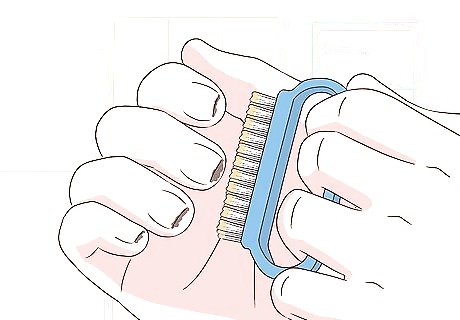
Use a scrub brush to get into the crevices of your fingernails. After you’ve scrubbed your hands for a few minutes, use a scrub brush to give your nails some extra attention. Make sure to get under your nails, as well as around the edges where stain might have seeped in. If you can’t get all the stain out from around your fingernails, you may need to just apply some nail polish remover with a cotton bail later on.
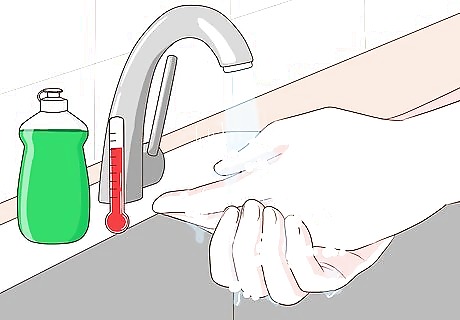
Rinse off your hands and wash them with warm water and dish soap. After the 2-3 minutes of scrubbing have passed, carefully and thoroughly rinse off your hands. If you notice there is still stain on them, you can do a second round of the salt and oil scrub. After you rinse, wash, and dry your hands, you should be good to move on with the rest of your day! After rinsing with warm water follow up with a good moisturizer. The dish soap helps remove the grease from the oil so your hands aren’t slippery.
Exploring Other Natural Alternatives
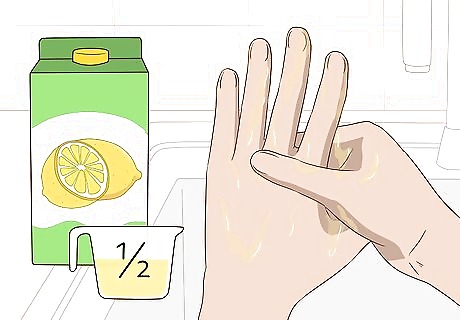
Wash your hands in lemon juice for a refreshing, cleansing option. Simply pour about ⁄2 cup (120 mL) of lemon juice over your hands (preferably while you’re standing over a sink), and massage it into your skin. It should remove the stain pretty quickly! Rinse your hands and wash them with warm water and dish soap to get rid of the stickiness from the lemon juice. Lemon juice also comes in handy to clean off stains from things like berries and beets.
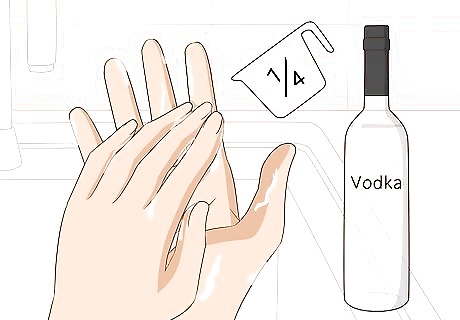
Give your hands a rinse in a drinking alcohol for an antiseptic clean. Vodka works best for cleaning off wood stain, but you could also use gin or tequila. Pour about a ⁄4 cup (59 mL) of liquor over your hands and rub it in to work out the stain. You could also soak a washcloth in liquor and use that to scrub your hands. Using drinking alcohol is better than using a typical stain remover (which generally contains non-consumable alcohols) because it doesn’t have the same harmful chemicals.
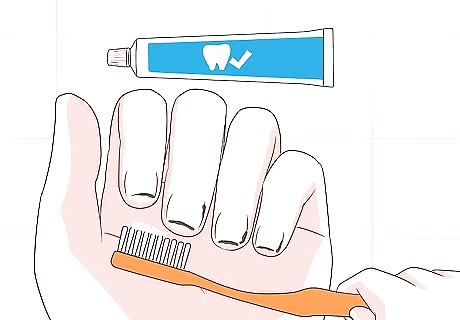
Scrub the stain with some toothpaste for a minty-clean feel and smell. This option works better for small areas of stain on your hands, and it can be really helpful for cleaning around your nails. Apply a little bit of toothpaste to the stained area, and use a toothbrush to work it in to your skin. Add a little warm water and continue scrubbing until the area comes clean. Toothpaste isn’t the best option to remove large areas of stain from your hands, as it can irritate and dry out your skin really quickly.
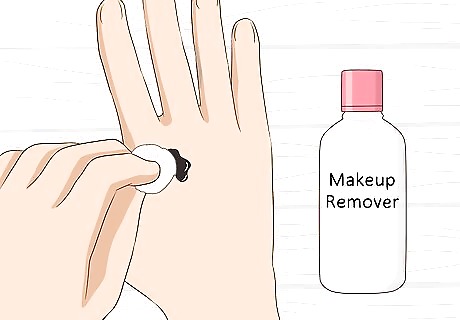
Use makeup remover to wipe away not-yet-dry stain quickly. Makeup remover might not work on set-in stains, but if you can get to it quickly after a project, you may be able to use it to simply wipe away the majority of the still-wet stain. Use makeup-remover wipes, or the kind of remover that comes in a bottle that you apply with a cotton ball. If the makeup remover doesn’t completely work, you may want to move on to the oil and salt scrub to clean everything else away.
Removing Stain with Chemicals
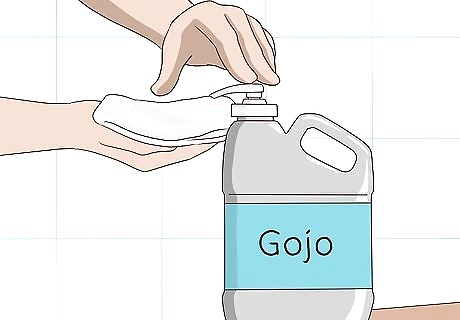
Carefully apply the chemical cleaner to a clean washcloth or rag. You can use turpentine, paint thinner, or a product like GoJo to wipe off wood stain from your hands. In most cases, you can simple dip the washcloth into the product you’ve chosen. Never pour the product directly onto your skin. Read the manufacturer’s warnings and instructions before beginning, and work in a well-ventilated area.
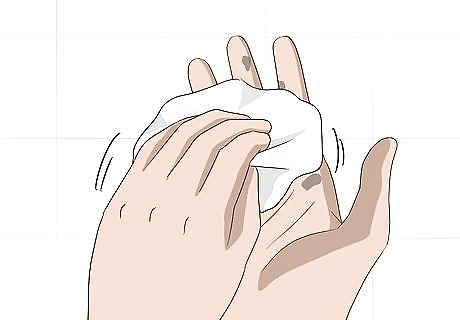
Rub the damp washcloth over the stained areas. Use a back and forth motion to work the cleaner into your skin. Re-moisten the washcloth if you need to. The wood stain should quickly disappear. Make sure to get between your fingers, too!
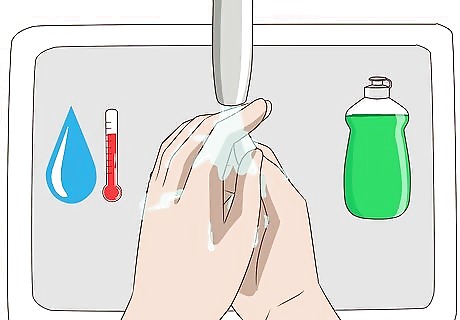
Wash your hands with warm water and dish soap. Immediately after using the chemical product, thoroughly clean your hands. Avoid touching your mouth, nose, or eyes until after you’ve washed your hands. If you used the paint thinner, turpentine, or any other product on other parts of your body, too, make sure to wash those areas as well.
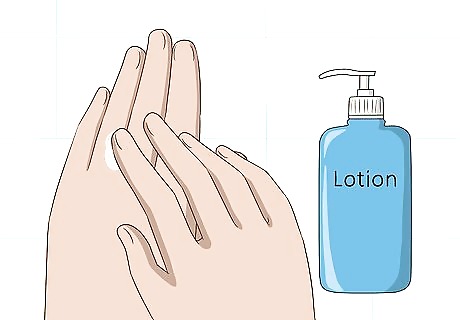
Moisturize your hands to keep them from getting dried out. After you’ve washed and dried your hands, liberally apply lotion to them. The chemical can really dry out and damage your skin, so make sure to give them a little extra TLC when you’re done. The chemicals in these products remove your skin’s natural oils.

















Comments
0 comment